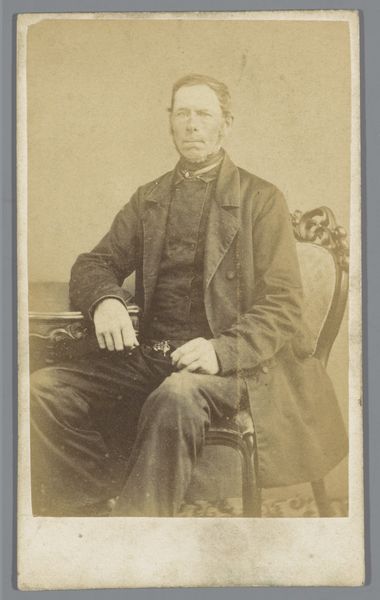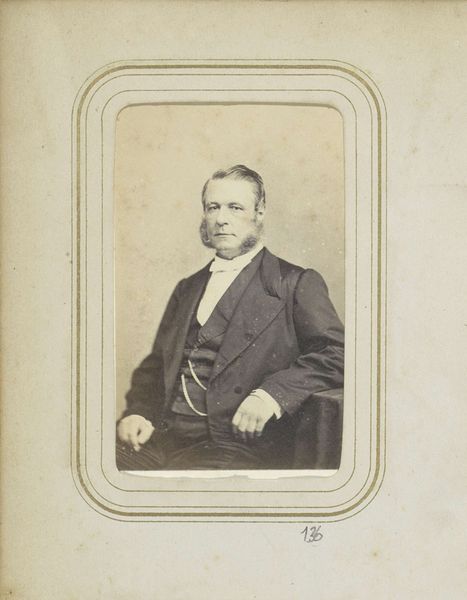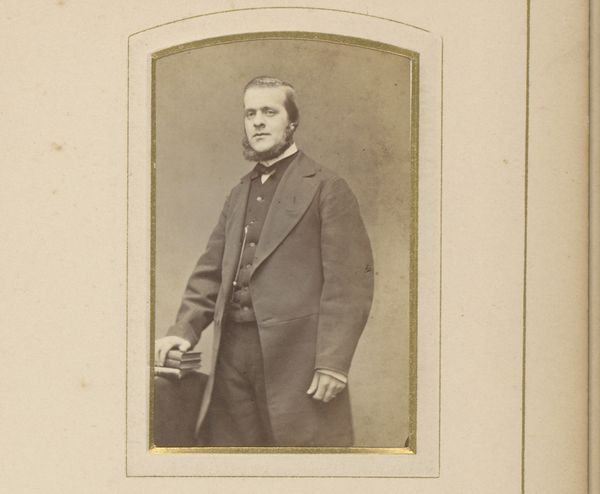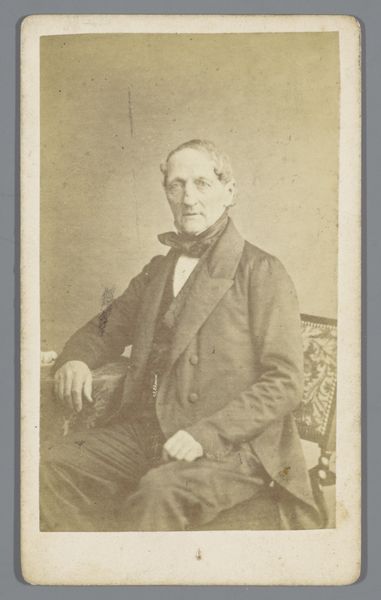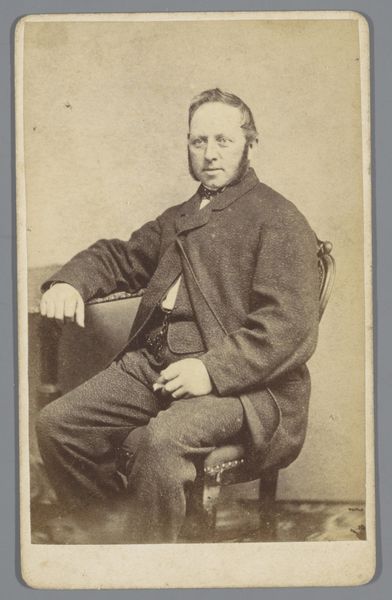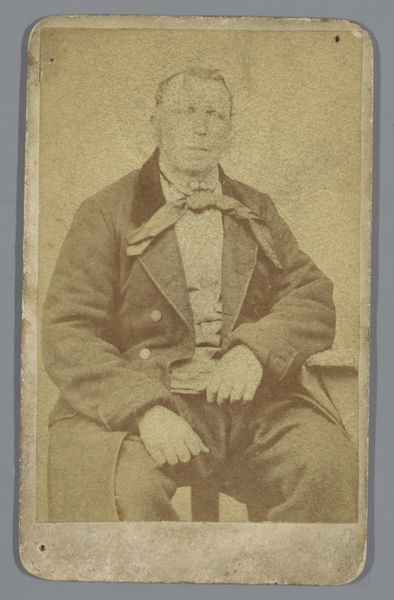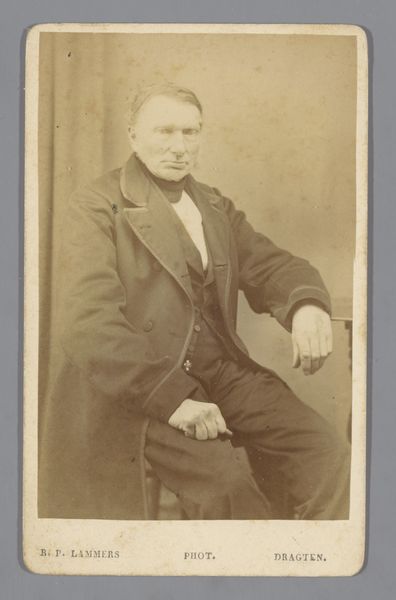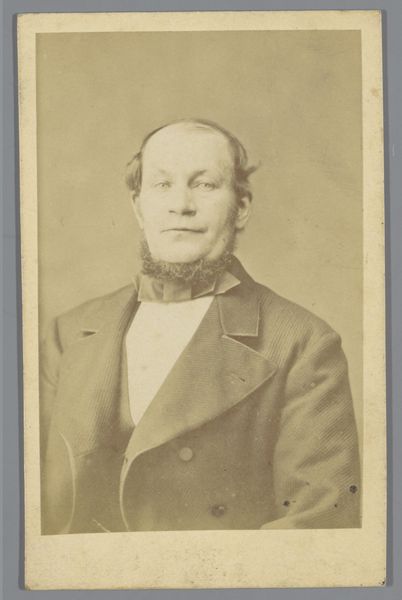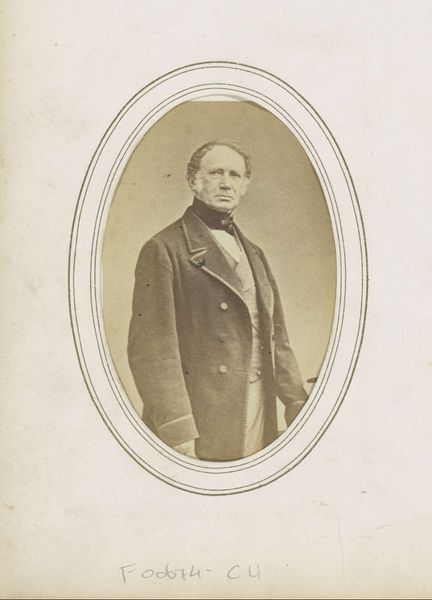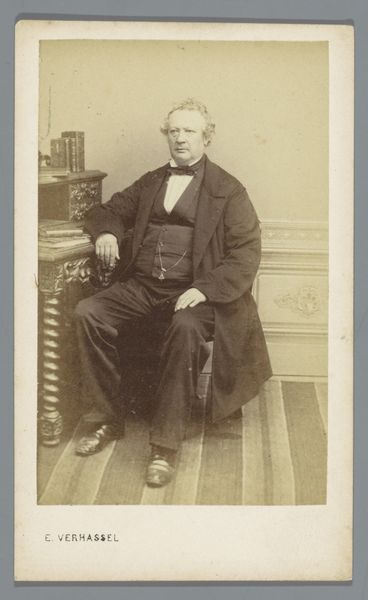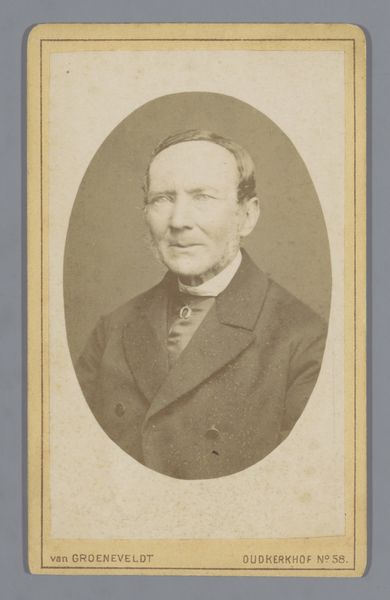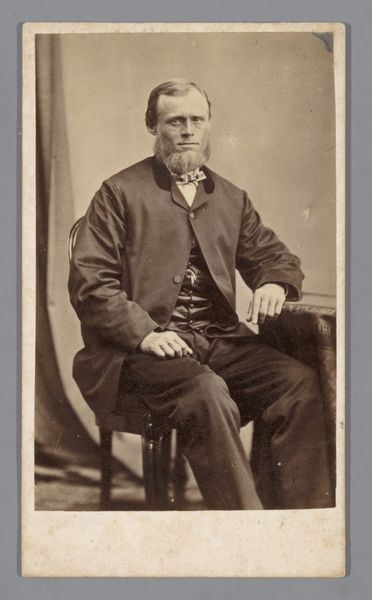
photography, gelatin-silver-print
#
portrait
#
photography
#
gelatin-silver-print
#
realism
Dimensions: height 101 mm, width 62 mm
Copyright: Rijks Museum: Open Domain
Curator: This captivating portrait, entitled "Portret van een onbekende man bij tafel" which translates to "Portrait of an Unknown Man at Table," was captured using the gelatin-silver print method sometime between 1870 and 1893, and the artist's name is Bernardus Petrus Rabels. Editor: He has kind of a…Melancholy air, don't you think? It's in the way he holds himself. Rigid posture, yet his hand just limply rests on his knee, like gravity is already winning. The lighting isn't helping! That sepia tone adds to this profound sense of longing. Curator: That posture likely wasn’t happenstance; during that era, maintaining a stern, almost stoic presence in portraits was perceived as portraying power, or the very least respectability. Even his attire–the dark suit and waistcoat–adheres to these formal conventions. Editor: And there he is sitting close to the edge of a fancy little chair, beside an ornate side table with a tasseled cloth on top, it suggests, in a sort of "keeping up appearances" way that reminds me of middle-class Dutch life during this period. He exudes an aura of resigned respectability; the man is literally sitting up straight, but the light isn't reaching his eyes, something's heavy in them. I'll call it disappointment with capital D. Curator: Well, gelatin-silver prints such as this provided incredibly detailed photographic renderings, and these techniques also served to promote realism and helped ensure an exact representation. As you suggested, portraiture acted as an aspirational device – in essence, people saw these not just as representation, but also as idealized images to enhance reputation. Editor: It is a really arresting image, it is a historical fingerprint that offers something profound about the sitter's relationship to his self-perception at the time. And isn’t it wild that what seemed staged then, feels like the most genuine thing to look at, decades after. Curator: Precisely, through a single image that aimed toward a sense of stiff “realism”, so much emerges; as cultural document, historical mirror and personal testimony – so complex.
Comments
No comments
Be the first to comment and join the conversation on the ultimate creative platform.
